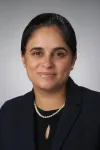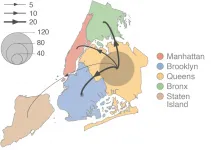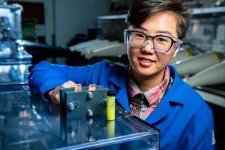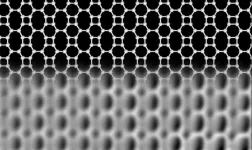INFORMATION:
Mayo Clinic is a leader in the movement to bring the tools and technology of AI into routine practice to benefit people with heart disease and those who are at increased risk of it. Mayo's Artificial Intelligence in Cardiology Work Group continues to apply these new techniques to early risk prediction and diagnosis of serious and complex heart problems. Dr. Lopez-Jimenez notes that this individualized approach to medicine in the field of digital health complements the knowledge of doctors and improves shared decision-making with patients and their families.
Dr. Lopez-Jimenez and co-authors Paul Friedman, M.D.; Zachi Attia, Ph.D.; and Suraj Kapa, M.D. - all of Mayo Clinic - have filed intellectual property related to the AI algorithm used in this research.
About Mayo Clinic
Mayo Clinic is a nonprofit organization committed to innovation in clinical practice, education and research, and providing compassion, expertise and answers to everyone who needs healing. Visit the Mayo Clinic News Network for additional Mayo Clinic news. For information on COVID-19, including Mayo Clinic's Coronavirus Map tracking tool, which has 14-day forecasting on COVID-19 trends, visit the Mayo Clinic COVID-19 Resource Center.
AI-enabled EKGs find difference between numerical age and biological age significantly affects health
2021-05-20
(Press-News.org) ROCHESTER, Minn. -- You might be older - or younger - than you think. A new study found that differences between a person's age in years and his or her biological age, as predicted by an artificial intelligence (AI)-enabled EKG, can provide measurable insights into health and longevity.
The AI model accurately predicted the age of most subjects, with a mean age gap of 0.88 years between EKG age and actual age. However, a number of subjects had a gap that was much larger, either seemingly much older or much younger by EKG age.
The likelihood to die during follow-up was much higher among those seemingly older by EKG age, compared to those whose EKG age was the same as their chronologic or actual age. The association was even stronger when predicting death caused by heart disease. Conversely, those who had a lesser age gap ? considered younger by EKG - had decreased risk.
"Our results validate and expand on our prior observations that EKG age using AI may detect accelerated aging by proving that those with older-than-expected age by EKG die sooner, particularly from heart disease. We know that mortality rate is one of the best ways to measure biological age, and our model proved that," says Francisco Lopez-Jimenez, M.D., chair of the Division of Preventive Cardiology at Mayo Clinic. Dr. Lopez-Jimenez is senior author of the study.
When researchers adjusted these data to consider multiple standard risk factors, the association between the age gap and cardiovascular mortality was even more pronounced. Subjects who were found to be oldest by EKG compared to their actual age had the greatest risk, even after accounting for medical conditions that would predict their survival, while those found the youngest compared to their actual age had lower cardiovascular risks.
Mayo Clinic researchers evaluated the12-lead EKG data of more than 25,000 subjects with an AI algorithm previously trained and validated to provide a biologic age prediction. Subjects with a positive age gap -- an EKG age higher than their chronological or actual age -- showed a clear connection to all-cause and cardiovascular mortality over time. The findings are published in European Heart Journal - Digital Health.
Study subjects were selected through the Rochester Epidemiology Project, an index of health-related information from medical providers in Olmsted County, Minnesota. The subjects had a mean age around 54 and were followed for approximately 12.5 years. The study excluded those with a baseline history of heart attacks, bypass surgery or stents, stroke or atrial fibrillation.
"Our findings open up a number of opportunities to help identify those who may benefit from preventive strategies the most. Now that the concept has been proven that EKG age relates to survival, it is time to think how we can incorporate this in clinical practice.More research will be needed to find the best ways to do it," says Dr. Lopez-Jimenez.
ELSE PRESS RELEASES FROM THIS DATE:
The doctor will see you (on the computer) now: telehealth's time has come
2021-05-20
During the pandemic, the old waiting room phrase "the doctor will see you now" has taken on a new meaning. So has the waiting room. Our kitchen table or living room couch is where many people do work lately, and that includes visits to the doctor. New research from Syracuse University's Falk College indicates this method of health care will continue even after COVID numbers are (hopefully) reduced.
"I was surprised by the results," said the study's lead author Bhavneet Walia, assistant professor of public health at Syracuse University. "I initially thought that, because of the challenges of telehealth, physicians would not be in favor of continuing post-pandemic. It turns out they do. But ...
An updated understanding of how to synthesize value-added chemicals
2021-05-20
Researchers have long been interested in finding ways to use simple hydrocarbons, chemicals made of a small number of carbon and hydrogen atoms, to create value-added chemicals, ones used in fuels, plastics, and other complex materials. Methane, a major component of natural gas, is one such chemical that scientists would like to find to ways to use more effectively, since there is currently no environmentally friendly and large-scale way to utilize this potent greenhouse gas.
A new paper in Science provides an updated understanding of how to add functional groups onto simple hydrocarbons like methane. Conducted by graduate students Qiaomu Yang and Yusen Qiao, postdoc Yu Heng Wang, and led by professors Patrick J. Walsh and Eric J. Schelter, this new and highly detailed mechanism ...
Thin is now in to turn terahertz polarization
2021-05-20
HOUSTON - (May 20, 2021) - It's always good when your hard work reflects well on you.
With the discovery of the giant polarization rotation of light, that is literally so.
The ultrathin, highly aligned carbon nanotube films first made by Rice University physicist Junichiro Kono and his students a few years ago turned out to have a surprising phenomenon waiting within: an ability to make highly capable terahertz polarization rotation possible.
This rotation doesn't mean the films are spinning. It does mean that polarized light from a laser or other source can now be manipulated in ways that were previously out of reach, making it completely visible or completely opaque with a device that's extremely ...
Survey measures health care delays during pandemic's beginning
2021-05-20
At the start of the COVID-19 outbreak, a University of Illinois Chicago researcher conducted a survey asking respondents if they experienced health care delays because of the pandemic. In addition to learning about the types of delays, the study also presented a unique opportunity to capture a historic moment at the pandemic's beginning.
Elizabeth Papautsky, UIC assistant professor of biomedical and health information sciences, is first author on "Characterizing Healthcare Delays and Interruptions in the U.S. During the COVID-19 Pandemic Using Data from an Internet-Based Cross-Sectional ...
New research maps COVID-19 dispersal dynamics in New York's first wave of epidemic
2021-05-20
During the first phase of the COVID-19 epidemic, New York City experienced high prevalence compared to other U.S. cities, yet little is known about the circulation of SARS-CoV-2 within and among its boroughs. A study published in PLOS Pathogens by Simon Dellicour at Université Libre de Bruxelles, Belgium, Ralf Duerr and Adriana Heguy at New York University, USA, and colleagues describe the dispersal dynamics of COVID-19 viral lineages at the state and city levels, illustrating the relatively important role of the borough of Queens as a SARS-CoV-2 transmission hub.
To better understand how the virus dispersed throughout New York ...
Global pollen samples reveal vegetation rate of change
2021-05-20
Ancient pollen samples and a new statistical approach may shed light on the global rate of change of vegetation and eventually on how much climate change and humans have played a part in altering landscapes, according to an international team of researchers.
"We know that climate and people interact with natural ecosystems and change them," said Sarah Ivory, assistant professor of geosciences and associate in the Earth and Environmental Systems Institute, Penn State. "Typically, we go to some particular location and study this by teasing apart these influences. In particular, we know that the impact people have goes back much earlier than what is typically ...
Compound commonly found in candles lights the way to grid-scale energy storage
2021-05-20
A compound used widely in candles offers promise for a much more modern energy challenge--storing massive amounts of energy to be fed into the electric grid as the need arises.
Scientists at the U.S. Department of Energy's Pacific Northwest National Laboratory have shown that low-cost organic compounds hold promise for storing grid energy. Common fluorenone, a bright yellow powder, was at first a reluctant participant, but with enough chemical persuasion has proven to be a potent partner for energy storage in flow battery systems, large systems that store energy for the grid.
Development of such storage is critical. When the grid goes offline due to severe weather, for instance, the large batteries under ...
Global acceleration in rates of vegetation change
2021-05-20
Wherever ecologists look, from tropical forests to tundra, ecosystems are being transformed by human land use and climate change. A hallmark of human impacts is that the rates of change in ecosystems are accelerating worldwide.
Surprisingly, a new study, published today in Science, found that these rates of ecological change began to speed up many thousands of years ago. "What we see today is just the tip of the iceberg" noted co-lead author Ondrej Mottl from the University of Bergen (UiB). "The accelerations we see during the industrial revolution and modern periods have a deep-rooted history stretching back in time."
Using a global network of over 1,000 fossil pollen records, the team found - and expected to find - a first peak ...
A new form of carbon
2021-05-20
Carbon exists in various forms. In addition to diamond and graphite, there are recently discovered forms with astonishing properties. For example graphene, with a thickness of just one atomic layer, is the thinnest known material, and its unusual properties make it an extremely exciting candidate for applications like future electronics and high-tech engineering. In graphene, each carbon atom is linked to three neighbours, forming hexagons arranged in a honeycomb network. Theoretical studies have shown that carbon atoms can also arrange in other flat network patterns, while still binding to three neighbours, but none of these predicted networks had been realized until now.
Researchers at the University of Marburg ...
ALMA discovers the most ancient galaxy with spiral morphology
2021-05-20
Analyzing data obtained with the Atacama Large Millimeter/submillimeter Array (ALMA), researchers found a galaxy with a spiral morphology by only 1.4 billion years after the Big Bang. This is the most ancient galaxy of its kind ever observed. The discovery of a galaxy with a spiral structure at such an early stage is an important clue to solving the classic questions of astronomy: "How and when did spiral galaxies form?"
"I was excited because I had never seen such clear evidence of a rotating disk, spiral structure, and centralized mass structure in a distant galaxy in any previous ...







